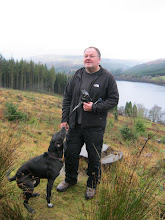When I lived in London, every December I would trek up to Hamleys, ostensibly to buy presents. Really, though, I was there to watch the bloke who throws the planes. If you haven't experienced this for yourself - the ground floor of Hamleys is a massive space, full of thronging shoppers and, adding to the market-place atmosphere people selling all the usual tacky toys that make up Christmas - the dogs that walk and do back-flips; whoopee cushions; soap bubble launchers and so on.
In the middle of all this, standing on box is a student - throwing a kit-made airplane into the air. The plane makes a complete lazy circle of the great hall, over the heads of the throng, before gliding gently into land in the hand of the bored student, who sends him off again. It's a thing of great beauty and magic. I become completely caught up in the moment, and naturally buy a pack for some nephew or other.
Come Christmas Day, we invariably break one of the planes in the drunken making of it, smash another one to pieces on its maiden flight into the twin towers of living-room door, and no doubt this year Bobby would do for the final plane what he did to that poor pheasant last week.
Reading Malcolm Gladwell is very similar. He writes for the New Yorker and has penned a series of books that have all been number one bestsellers in the states. His approach is to hit you with some gob-smacking statistic, (eg, you have virtually no chance of being a professional ice-hockey player in Canada if you were born in the last 6 months of the year) and then take you on a journey round the world, picking up a pocketful of analogies along the way, before delivering you back home, breathless and verbally fulfilled. Some trick.
Before you know it, you're at some dinner-party or pub, and you bring up something he's said, except you only half remember it, and miss out an important step of the trick, and suddenly what seemed genius seems either a bit silly, or a bit obvious, to both you and the people suffering your groping drivel.
The collection of his New Yorker articles is his best book by far: "What The Dog Saw".
.
Tuesday, 14 September 2010
Subscribe to:
Post Comments (Atom)

No comments:
Post a Comment